Designs for a Cooler Planet
The festival returns to Otaniemi this fall, 6 Sept – 3 Oct 2024, revealing how we can change the world.
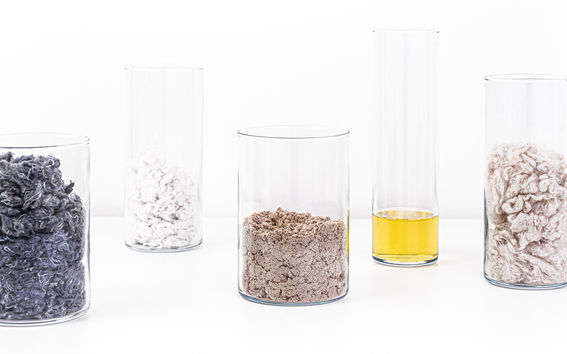
A circular economy will be the new normal in the fashion and textile sector in the near future. It will change the way we design, manufacture and consume textiles and garments. It will also change the logic of business, with responsibility for products extending to cover even the end of life stage. Products need to be taken back and placed in the effective materials recycling system, making old textiles a valuable raw material for fibre production. This change needs new knowledge, new technologies, new partnering and industrial ecosystems. This exhibition presents three cases/projects that focus on textile recycling using latest technological innovations and new design strategies to build ecosystems for textile circularity.
Key takeaways:
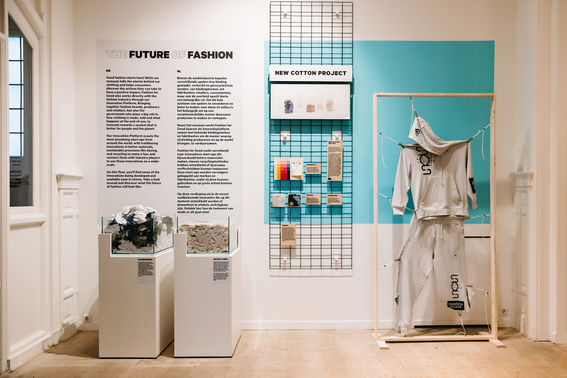
Design for recycling
In the New Cotton project, twelve stakeholders are coming together to break new ground by demonstrating an entirely circular model for commercial garment production. The focus is on human-made cellulosic fiber that looks and feels like cotton – a “new cotton” – using Infinited Fiber Company’s textile fiber regeneration technology. The project aims to study what happens when lab-scale innovation is scaled up to industrial reality. It also acts as an inspiration and stepping stone for further, even bigger circular initiatives as, going forward, circular economy practices are realized in industry.
Learn more about the New Cotton Project
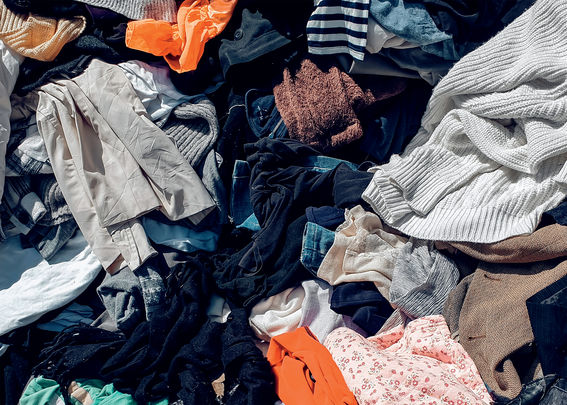
System for textile recycling
The T-REX Project (Textile Recycling Excellence) is working toward creating a harmonised EU blueprint for closed-loop sorting and recycling of household textile waste. End-of-use textiles will be transformed from waste into a desired feedstock and commodity for new business models that can be adopted at scale. The project works toward developing a systematic approach to the problem of textile waste, resource preservation and reduction of the environmental footprint of the fashion industry.
The project is focused on the recycling process of polyester, polyamide 6, and cellulosic materials from textile waste into new garments. Simultaneously, the project will conduct lifecycle analysis of the circular process, integrate digital tools that streamline the process of closed-loop textile recycling, and produce circular design guidelines.

Conversion of old books into new textile fibres via dry-jet wet spinning
In the course of the FINIX project, paper waste is turned into new textile fibres by means of Ioncell® technology.
Discarded books have been collected by Pääkaupunkiseudun Kierrätyskeskus Oy (Reuse Centre) and provided for recycling purposes. The books are ground, pre-treated, dissolved in an ionic liquid and chemically recycled via a lyocell type dry-jet wet spinning technique. The produced fibres are tested and analysed in detail. The achieved results are compared with the properties of commercial fibres.
The yarn developed, in both treated and untreated qualities, is then used to create a new, unisex knitted garment prototype, with future functionality and versatility at the core of the design.
Ioncell®, developed by Aalto University in cooperation with the University of Helsinki, is an emerging technique to produce cellulosic fibres of high quality for textile and technical applications. Ioncell® fibres are soft to touch, strong even when wet, moisture absorbing, biodegradable, bright and can be dyed like cotton or viscose.
28th September, 13:15-14:45 EET (12:15-13:45 CET)
Agenda
13:15-13:20 Introduction /Kirsi Niinimäki, Aalto University
13:20-13:40 Dolly Vellanki, Innovation Associate, Fashion For Good
13:40-14:00 Josse Kunst, Chief Commercial Officer, CuRe Technology
14:00-14:20 Paula Sarsama, Program Manager, Infinited Fiber Company
14:20-14:45 Q&A with all speakers
Speakers
Dolly Vellanki will share lessons learned from the Sorting for Circularity project series and give insight into regulation and policy around sorting and recycling of textiles.
Josse Kunst will talk about the current state of the chemical recycling of synthetic fibres, focusing on polyester and polyamide.
Paula Sarsama will discuss the developments in the chemical recycling of cotton.
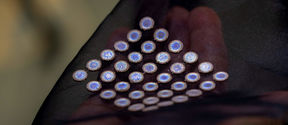
The festival returns to Otaniemi this fall, 6 Sept – 3 Oct 2024, revealing how we can change the world.

What are the biggest challenges and opportunities for textiles and circular practices?
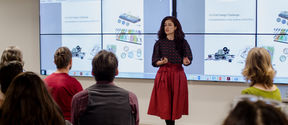
The Department of Design is a diverse community of competent, creative and responsible individuals. In design, we appreciate technical skill, social significance and artistic expression.
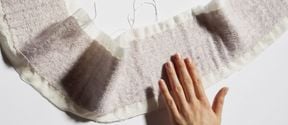
AaltoTEXTILES is a network linking all textile-material related activities within design, technology and business at Aalto University